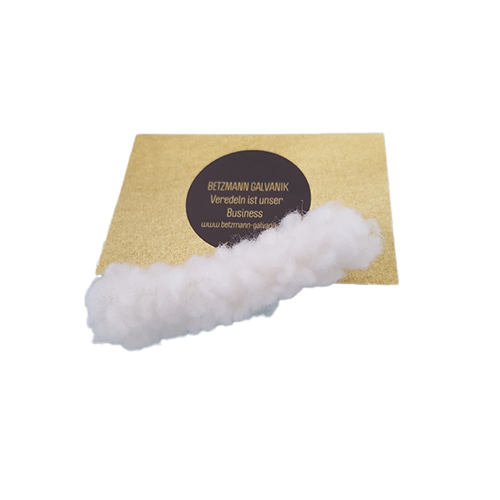Palladium 5 Gramm / Liter
€57.30*
Available, delivery time: 1-2 days
Product information "Palladium 5 Gramm / Liter"
Palladium Solution from Betzmann Galvanik with 5 Gramm per Liter - as nickel substitute - barrier layer or as hard decorative top layer!
Palladium electrolyte - The allergen-free alternative to nickel!
Palladinizing or plating with palladium is a rather rarely used galvanic coating. However, palladium plating can offer some advantages, especially as a substitute for galvanic nickel plating with a nickel electrolyte.
The advantages of palladium electrolyte compared to electroless nickel plating:
Typically, a nickel electrolyte is used to apply a barrier layer of nickel between copper and gold, preventing the two metals from mixing. However, a palladium plating offers several distinct advantages over the nickel electrolyte:
Palladium is more noble than nickel, meaning there is no surface corrosion, and the palladium does NOT require extra activation prior to gold plating as nickel does.
The deposition rate and efficiency are excellent, i.e. there is no unwanted gas evolution.
The electrolyte deposits silvery white, very bright palladium which can be used as a bright "finish". Gold plating with the Betzmann gold electrolyte for pin electroplating achieves an optimum result on palladium.
In contrast to nickel electrolyte, palladium is not carcinogenic and is therefore also permitted for private users!
A very good combination for gold plating of almost all metals is:
Alkaline or acid copper depending on the metal, palladium and finally gold.
All necessary electrolytes are available in our store.
Palladium can be plated on the following metals:
Copper, nickel, brass, silver, gold, on all dechromed surfaces.
Recommended voltages: Pin electroplating: from 3 volts - Bath electroplating: 3 - 4 volts.
Recommended is graphite electrode or platinum electrode from our store.
Palladium content: 5 grams per liter
Main benefits;
Makes a great alternative to rhodium plating giving an authentic 18 carat white gold or platinum plated look.
- palladium plating solution (unlike rhodium) doesn’t etch materials made of calcium carbonate such as pearl and coral, so you won’t have to worry about masking out these materials before submerging them in your palladium plating bath.
- can be used as a substitute for nickel as a barrier layer for gold plating on copper and its alloys.
- can be used as an alternative to silver as it doesn’t tarnish and is hard-wearing.
- Very low porosity – excellent for corrosion protection.
- Readily wettable by solder and dissolves a lot more slowly than gold in the solder making it an excellent top coat over gold for electrical contacts.
Operating Parameters and Deposit Data
| Voltage Range | 3.0 – 3.5 |
| Temperature | 18 – 25 °C |
| Palladium Concentration | 5g/l |
| Electrode | Carbon or Platinum |
| Palladium content in plate | 99.9% (balance carbon, nitrogen) |
| Lightness (L*) of deposit | 65 (Cielab) |
| Plating Rate at (3.5 volts, carbon electrode) | 0.6 micron per minute |
| Hardness | 488 Hv |
| Density of deposit | 11.85 g/cm3 |
| Stress | Stressed |
| Special storage requirements | None |
| Shelf life | 1 – 2 years |
| Health and Safety classification | Irritant |
| Special considerations | None |
| Transport (UN number) | None: Not classified as dangerous for transport |

Signalword: Warning
H-phrases:
H332 Harmful by inhalation.
H312 Harmful in contact with skin.
H302 Harmful if swallowed.
P phrases:
P280 Wear protective gloves/protective clothing/eye protection/face protection.
P301 IF INFECTED:P310 Immediately call a POISON CENTER/doctor/.







